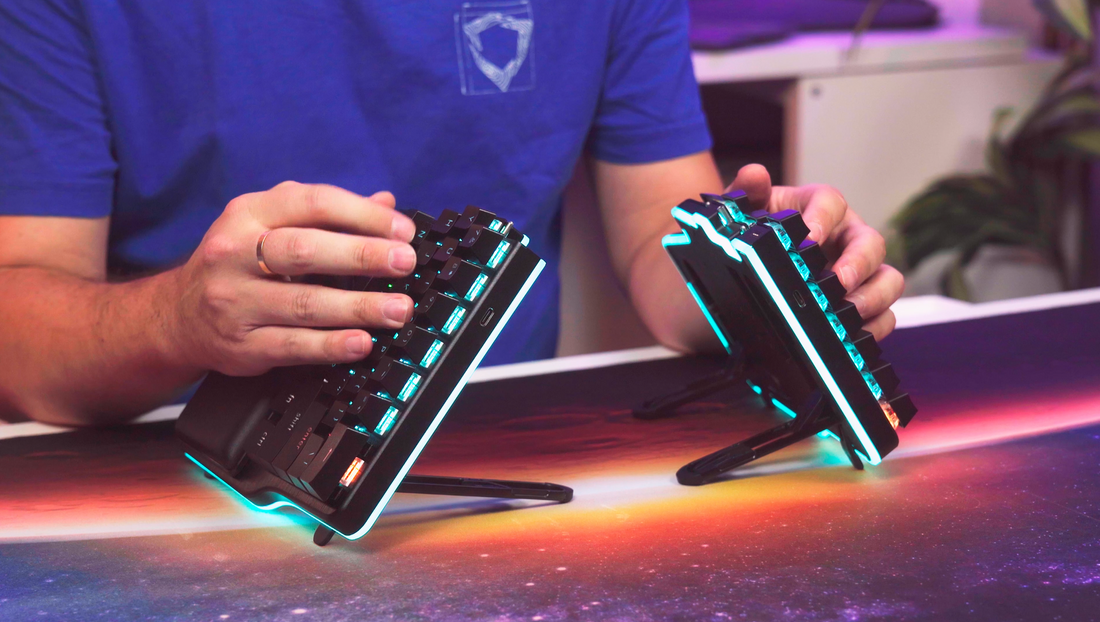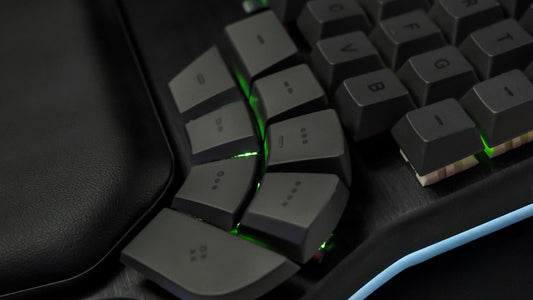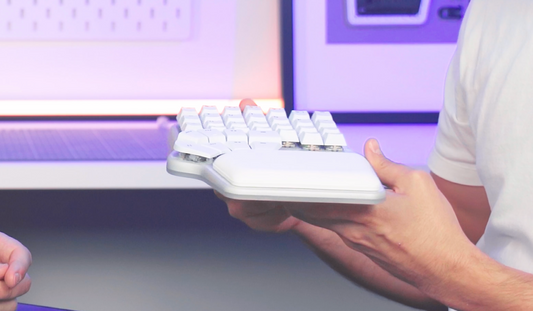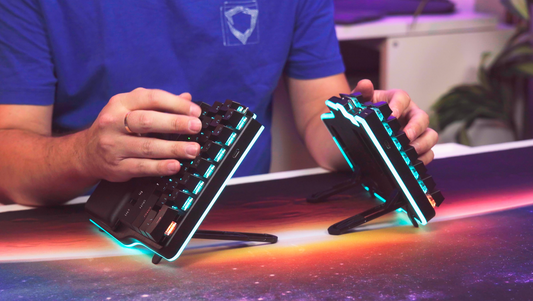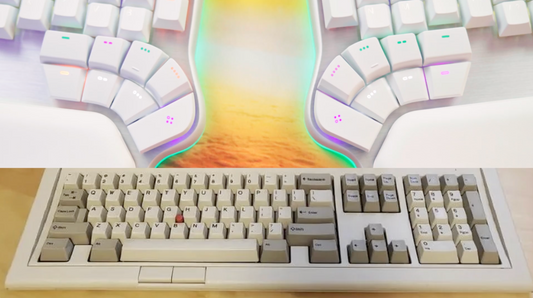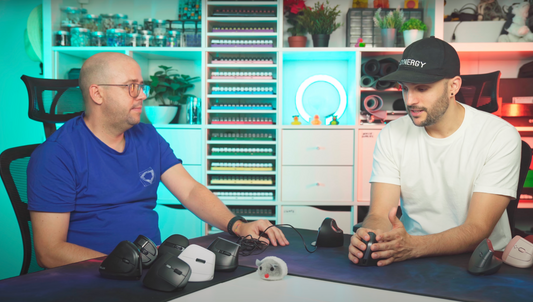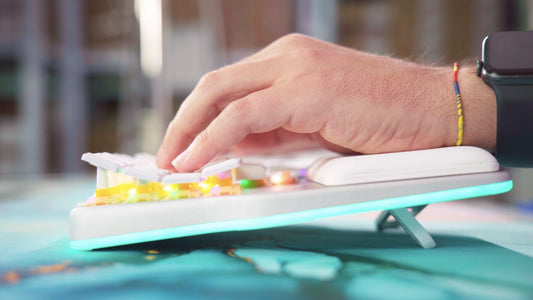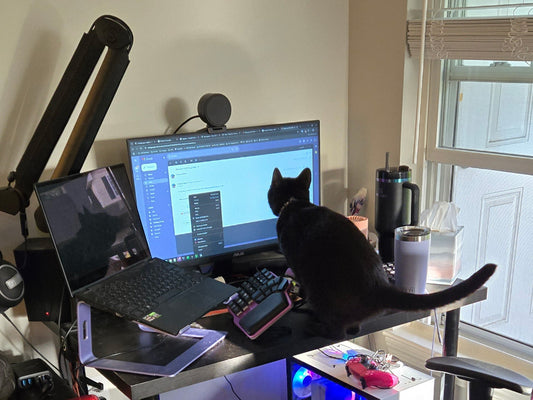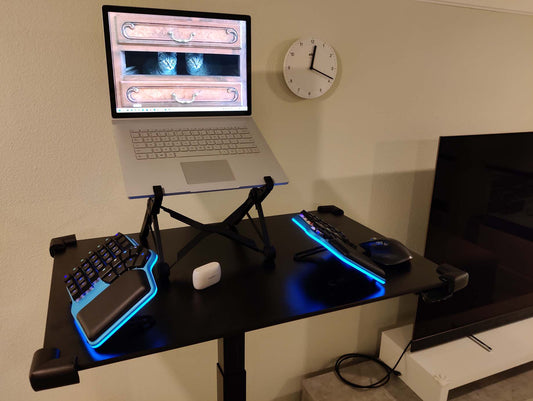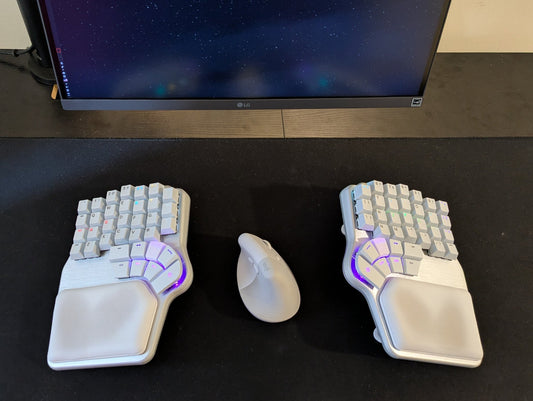How do you design the best keyboard tenting solution? The answer lies in relentless engineering, testing, and prototyping — over and over again.
Why Tent a Keyboard?
If you’ve ever felt wrist pain or tension after long typing sessions, it’s often because of forearm pronation — when your palms face downward as you type. This position forces the ulna and radius bones in your forearm to rotate inward, creating a “scissor-like” movement that compresses nerves, tendons, and blood vessels.
To reduce that strain, your hands should rest at a more natural, neutral angle — exactly what tenting does. By slightly tilting each half of your keyboard in opposite directions, you align your wrists with your forearms, improving comfort and long-term ergonomics.

The simplest way to achieve this is by bending a single keyboard in the middle: the tent. Popular options like the Periboard 413B or Logitech K860 use this fixed-angle approach.
These designs offer a noticeable ergonomic improvement but share one big limitation: a single tenting angle.
 Split keyboards like the Kinesis Freestyle, UHK 60, or Moonlander take the next step by physically separating both keyboard halves. This lets users position each half more naturally — but tenting height is still limited, often below 45°.
Split keyboards like the Kinesis Freestyle, UHK 60, or Moonlander take the next step by physically separating both keyboard halves. This lets users position each half more naturally — but tenting height is still limited, often below 45°.

Higher tenting angles bring the wrists even closer to their natural position. That means less tension, better posture, and potential relief from carpal tunnel or tendinitis symptoms.
The catch? Most keyboards that achieve higher angles rely on external attachments — bulky, metal hinge systems that add weight and height, and often require tools.

So the question became clear: What would the ideal tenting system look like?
For the next generation of ergonomic keyboards, the ideal tenting mechanism had to be:
- Lightweight yet strong
- Foldable into the keyboard itself
- Tool-free and easy to adjust
- Capable of multiple angles for any wrist position
The OG Raise Tenting System

The original Dygma Raise introduced hinged legs instead of bulky plates. They attached to dedicated slots on the keyboard base — a simpler, sleeker, and more robust design that required no tools.
It was a huge improvement, but it still had limits:
- It was relatively heavy.
- It couldn’t exceed roughly 45° of tenting.
- And crucially, it didn’t fold into the keyboard body.
The design needed thinner, stronger legs that could remain stable at every angle to reach the next level.
Experimenting Our Way Forward
The Clamp
A sliding leg secured by a clamp offered infinite angle possibilities… but only within a narrow range. At low angles, it wasn’t strong enough. And setting it up symmetrically on both halves? Nearly impossible without wobble.

The Sliding Rod
Next, a rod slid through pre-set notches, improving strength and setup precision. But at higher angles, the rod became nearly perpendicular to the base and risked sliding out.

The Claw
The design evolved into a two-legged design with different lengths that adapts to each angle to fix that. This works mechanically but introduces two major issues: it looks ugly and requires a multi-step setup process — far from ideal for daily use.
So, the team went back to the drawing board.

The Final Design: Raise 2’s Dual-Rod System
The Raise 2 introduces a refined tenting solution: two rods anchored to a single, strong aluminum leg, pivoting into different slots on the base.
- One rod covers 5–20°, the other 25–60°.
- Each stays nearly perpendicular to the surface, ensuring maximum stability.
- The legs include markings for precise angle alignment on both sides.

In addition, there are reverse-tilting legs (5° and 10°), allowing for a neutral or slightly flexed wrist position — minimizing wrist extension and fatigue.
Other minor but essential improvements include:
- A silicone rounded tip to prevent slipping and ensure smooth movement.
- A side leg system that compensates for the keyboard’s shape, avoiding wobble.
- A notch on each aluminum leg for easy deployment.
It’s the kind of over-engineered detail Dygma is known for — functional, durable, and built for everyday comfort.
This system now powers both the Dygma Defy and the Dygma Raise 2. But design innovation never stops.
Recent refinements include:
- Reinforced hinges to prevent loosening over time.
- Stronger materials for durability.
- Small UX details like “wings” on the rods (to prevent incorrect folding) and stickers on the side legs as visual reminders.
These small touches elevate the overall experience, making every adjustment feel satisfying, stable, and intuitive.
The Beauty of Overengineering

Tenting might seem like a small feature, but it's a game-changer for those who type for hours daily. Every angle, material, and hinge has been carefully considered to help your hands, wrists, and posture stay healthy — while keeping your setup sleek and portable.
Because at Dygma, comfort is not a compromise.
So — did we overdo it? Or did we just redefine what an ergonomic keyboard should feel like?
Share your thoughts on our socials!
Got questions? Reach us via email at support@dygma.com, or join the conversation on Discord or Reddit 🫶
